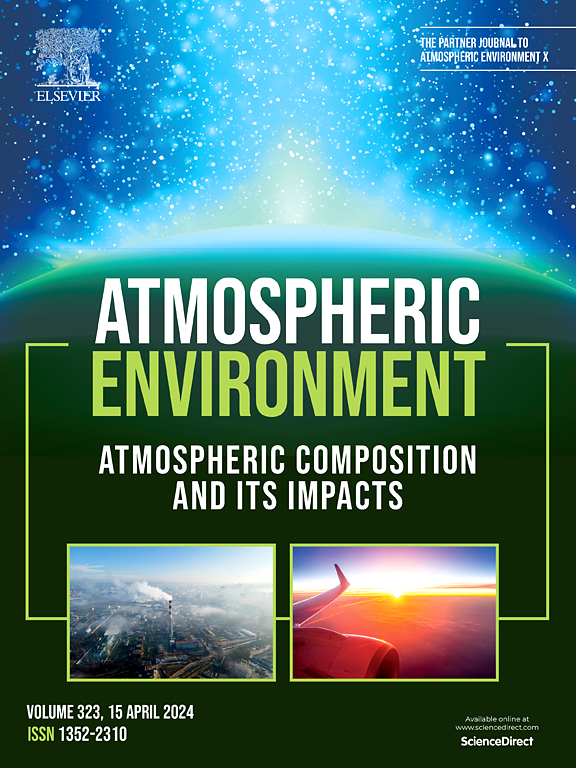Seasonal variations in PM2.5 composition and their effects on CCN activation properties
IF 4.2
2区 环境科学与生态学
Q2 ENVIRONMENTAL SCIENCES
引用次数: 0
Abstract
PM2.5 samples were collected in Xi'an during the summer and winter of 2019 to analyze seasonal, diurnal, and pollution-level variations in particle chemical composition. Scanning Mobility CCN Analysis was used to investigate the impact of chemical composition on cloud condensation nuclei (CCN) activation. Results showed increased particle concentrations in winter, with significant rises in SO42−, OM, NO3-, and Cl−. Motor vehicle exhaust was the primary pollution source, while biomass burning air masses further exacerbated winter pollution. Xi'an aerosols exhibited continental characteristics, with κccn = 0.26 ± 0.07 in summer and κccn = 0.33 ± 0.09 in winter. Seasonal κccn differences were mainly attributed to the prevalence of weakly hygroscopic air masses in summer, while higher κccn values were observed in winter and during severe pollution episodes. The κ-closure scheme proposed in this study performed poorly at higher supersaturations (the nucleation mode), with nitrate evaporation losses and the surface tension reduction effect of organics being key factors. A fixed κ-closure scheme could not accurately characterize CCN activity across different seasons, but after appropriate corrections, the closure error was controlled within 6%, achieving a good agreement.

PM2.5 成分的季节性变化及其对 CCN 活化特性的影响
本文章由计算机程序翻译,如有差异,请以英文原文为准。
求助全文
约1分钟内获得全文
求助全文
来源期刊

Atmospheric Environment
环境科学-环境科学
CiteScore
9.40
自引率
8.00%
发文量
458
审稿时长
53 days
期刊介绍:
Atmospheric Environment has an open access mirror journal Atmospheric Environment: X, sharing the same aims and scope, editorial team, submission system and rigorous peer review.
Atmospheric Environment is the international journal for scientists in different disciplines related to atmospheric composition and its impacts. The journal publishes scientific articles with atmospheric relevance of emissions and depositions of gaseous and particulate compounds, chemical processes and physical effects in the atmosphere, as well as impacts of the changing atmospheric composition on human health, air quality, climate change, and ecosystems.
 求助内容:
求助内容: 应助结果提醒方式:
应助结果提醒方式:


